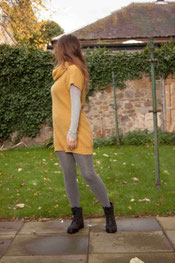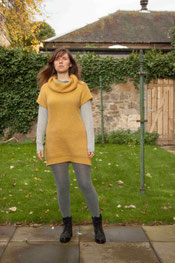Techniques
These are some of the main techniques of natural eyesight:
Palming
Palming is a practice which comes from yoga. It can be a kind of meditation, which helps us to gain a new awareness of our eyes and relaxation.

Instructions:
This involves covering your closed eyes with your palms, lightly cupped over each eye. It is important to be in a comfortable position for this, such as leaning on a cushion on a table as in the photo above. With our hands covering our eyes, we open our eyes to check there is no light visible. If any light is coming in, we adjust our hand position to achieve total darkness.
During palming we become aware of our breathing and the feeling in our eyes so we can visualize the improvement in our vision. After a while we remove our hands, and little by little we open our eyes and then we look at the world.
You can practice palming as often as you want. You can practice short or long sessions of palming. Sessions of about 1 to 20 minutes are average, but there is no rule for the length of time - it’s entirely up to you.
Sunning
The sun is life. It produces vitamin D in our bodies and regulates our nervous systems. Sunning involves the application of light to the eyes. Practicing sunning relaxes our eyes and helps us to sleep better.
If you are sensitive to sunlight, you can practice sunning early in the morning or near sunset.


Instructions:
Close your eyes and face the sun. Move your head towards one shoulder, and then to the other shoulder. The sun has to hit every part of your eyes in this movement. Don't go too fast, and let go of your feelings. This is like an eye massage and it should be completely relaxing. After a period of no more than three minutes, turn back to the sun, and with your eyes closed undertake palming. Notice all the graduations and the change of light to darkness as your hands come to cover your eyes.
In countries where there is limited sunlight you can use a desk lamp with a bulb of about 100 or 60 watts. Another option is to practice skying.
Skying
We practice skying when there is no sun visible.

Instructions:
You should stand in a place where you can look at the sky. Put one hand on the back of your head and the other hand on your forehead. The intention is to massage your head with your hands as you move your head. Move your head side to side with your eyes open, blinking quickly - don't forget to breathe. After two minutes of skying, do a minute of swinging. Then, do three minutes of skying and two minutes of long swing.
The Long Swing
The long swing is relaxing to the eyesight and your entire body. It develops a sense of fluidity and flexibility and allows you to sense the movement. This is a long movement of the eyes, head and body.


Instructions:
This consists of moving in a long swing from left to right. Stand with your legs slightly more than hip-width apart and your knees slightly bent. Hold your index finger about one foot in front of your face (this is optional, but particularly at the start can be useful for appreciating the movement). With a relaxed gaze, look at your finger. Swing your body to the right, twist your body and raise your left heel slightly off the ground. Then, swing your body to the left, twist your body and raise your right heel off the ground. Do this twenty five times. You can switch hands if necessary.
The long swing is particularly helpful before going to bed.
The sway
The sway is a variant of the long swing. This is relaxing for both our eyesight and body. Just think about putting a baby to sleep; we usually sway because the baby calms down with this motion and he or she finally sleeps.


Instructions:
Stand with your legs about one to two feet apart and your knees slightly bent. Sway the body side to side, from left to right. Everything should be moving together, the open eyes, body and head. This is like sweeping the landscape. Don't stop in the centre, and keep the neck relaxed. Breathe in at one side, and then breathe out up to the centre and across. Blink soft and easy. Relax.
Shifting
Shifting involves moving your gaze from detail to detail. This means that we only see clearly what we look at centrally, what is focused in the fovea centralis. The remainder of the scene that we are not focusing on will be poorly visible, but we know they are there because of the peripheral vision.
Instructions:
Shifting can also be called nose drawing. It consists of looking at details and is like drawing the outlines of the things with your gaze. The nose points and directs the movement as if it were a pencil. It doesn't matter if you don't see perfectly, just relax and accept the blur. Enjoy what you see; the colours, shapes and movements. Following this, you can close your eyes and imagine what you have just seen, and then, open them again and check it. You can do this through movement as well, for example by walking. Imagine the distance in your mind while you are walking, and open your eyes to check. Shifting is ideally practiced with no glasses or contacts on. But, in fact, it is the only Bates Method technique that can be practiced with glasses on.
If you need more information about how to carry out the different techniques, take a look at the video section.
